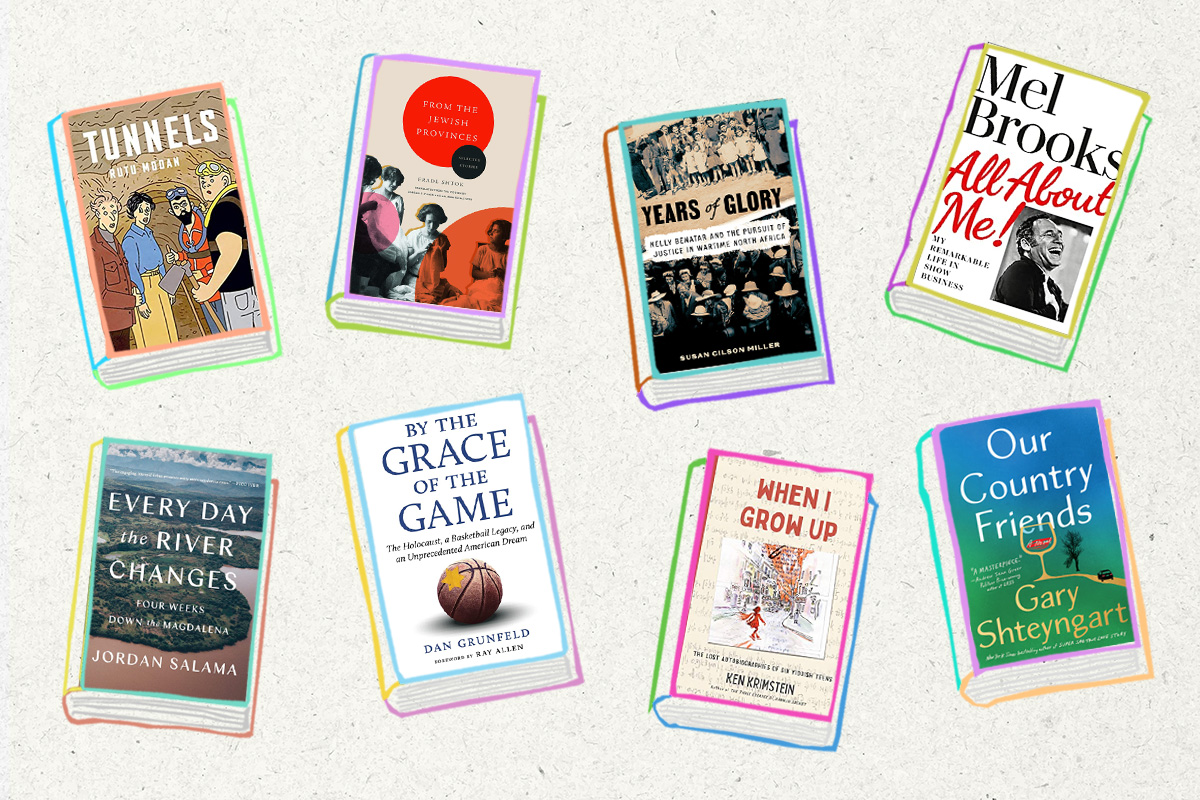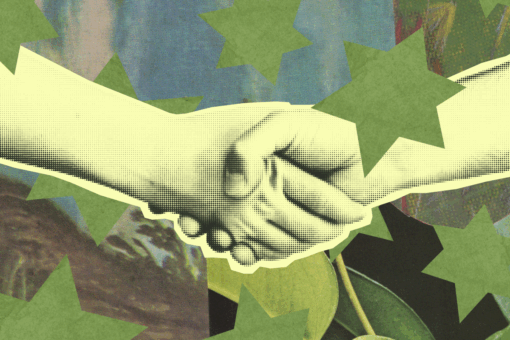Time isn’t real anymore, and I hate to break it to you, but it’s Hanukkah this month. Yes, we’re basically getting another Thanksgivukkah (here in the U.S., at least) — which means if you’re looking to give books as your Hanukkah gifts, now is the time to start purchasing them. While some of these November Jewish books may not be out in time for the holiday, check out all our previous Jewish book coverage right here. As always, this list is shoppable on Bookshop, a platform supporting independent bookstores.
Here’s what we’re reading this month — from graphic novels to a forgotten World War II heroine to Yiddish stories lost to time. Here’s to remembering, and reading.
1. When I Grow Up: The Lost Autobiographies of Six Yiddish Teenagers by Ken Krimstein
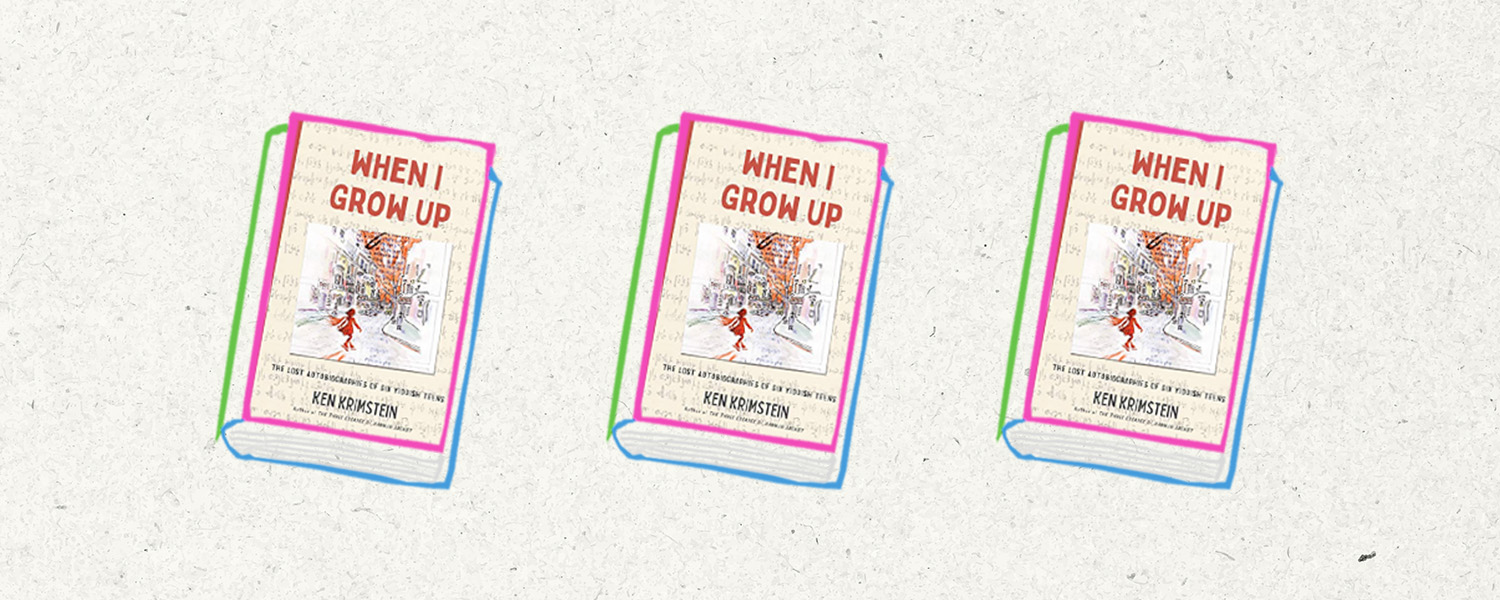
“When I Grow Up” is the story of six anonymous Jewish teenagers. But before we get there, some history: In 2017, hundreds of never-before-published autobiographies of Eastern European Jewish teens from the 1930s were found in the basement of a Lithuanian church in Vilnius. The autobiographies were discovered as part of a trove of 170,000 Jewish documents thought to have been destroyed by the Nazis. (Here are five incredible highlights from the discovery, and here is an online exhibit YIVO put on featuring one of the autobiographies.) They were written as part of a competition announced in 1932 by YIVO, where they asked 13- to 21-year-olds to submit anonymous autobiographies as part of an ethnographic study — awarding a grand prize for the best entry.
Ken Krimstein, a New Yorker cartoonist, journeyed to Vilnius with YIVO and beautifully adapted six of the teenagers’ stories. We don’t know any of their fates of what happened during the Holocaust (except one), yet Krimstein’s rendering of their autobiographies is poignant and touching. His art brings to life the everyday triumphs and trials the teens write about — from studying in yeshiva to ice skating to agonizing whether or not a boy likes them back. And while we will never know what happened to “The Eighth Daughter” or “The Boy Who Liked a Girl,” we will remember their stories now.
Read if you’re into: Jewish history, Yiddish, pre-WWII Europe. The Jewish angle: all of it. Get it here.
2. Our Country Friends by Gary Shteyngart
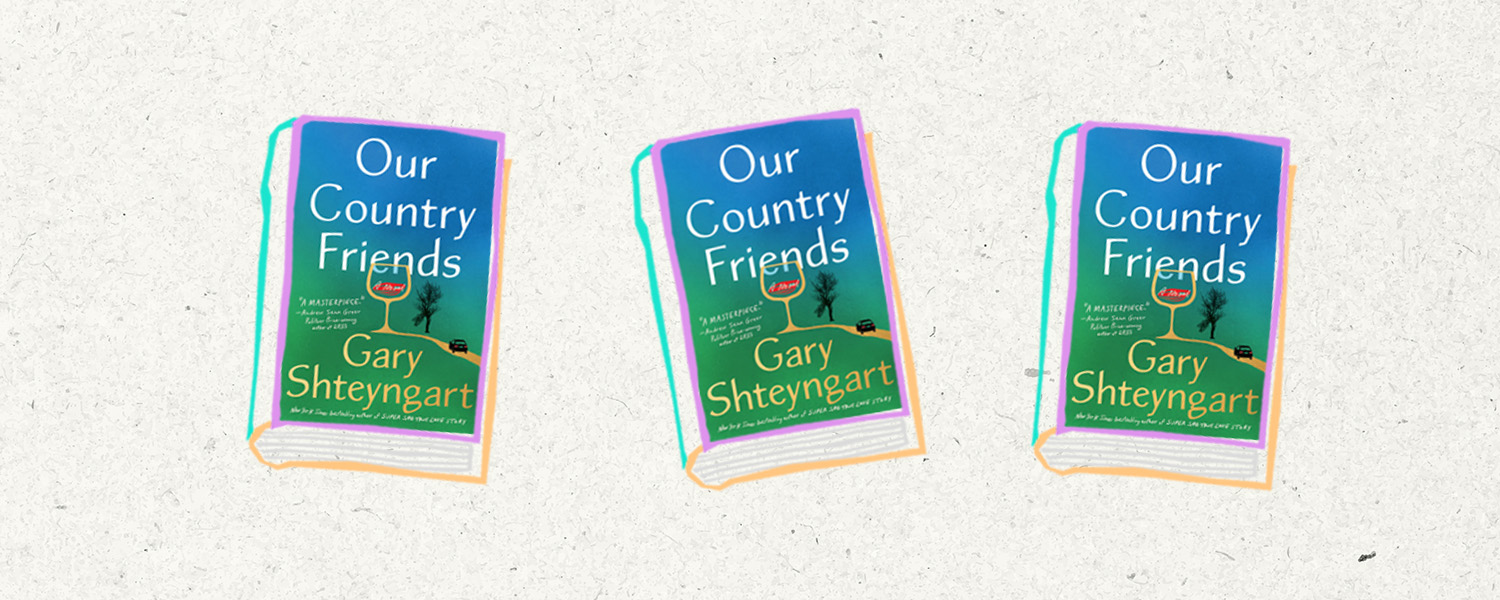
In early October, everybody was talking about Gary Shteyngart’s botched circumcision, but perhaps the news cycle will shift in November to discuss his early pandemic novel, “Our Country Friends.” Was I ready to read a novel about the early pandemic? Unclear. But did I thoroughly enjoy “Our Country Friends,” Gary Shteyngart’s new novel about the early pandemic? Absolutely. This is the fifth novel from Shteyngart, a Soviet-born Jewish writer, and one of my favorites. The main character is (unsurprising for those familiar with Shteyngart’s writing) a Russian-born novelist. In March 2020, Alexander (Sasha) Senderovsky invites friends to his country house to escape the city for a few weeks alongside himself, his wife and their daughter. What Sasha — and none of them — know is that those few weeks will turn into months in isolation. The eight friends — if you can even call them that — must navigate the troubled waters of early COVID together while figuring out romance, friendship and chosen family.
I can’t sum up the characters better than the description can: “A Russian-born novelist; his Russian-born psychiatrist wife; their precocious child obsessed with K-pop; a struggling Indian American writer; a wildly successful Korean American app developer; a global dandy with three passports; a Southern flamethrower of an essayist; and a movie star, the Actor, whose arrival upsets the equilibrium of this chosen family.” As Kirkus wrote, “The Great American Pandemic Novel only Shteyngart could write, full of hyphenated identities, killer prose, and wild vitality.” A funny, poignant novel that will actually make you want to read about the pandemic.
Read if you’re into: satire, friendship, drama. The Jewish angle: Gary Shteyngart. Get it here.
3. Years of Glory: Nelly Benatar and the Pursuit of Justice in Wartime North Africa by Susan Gilson Miller
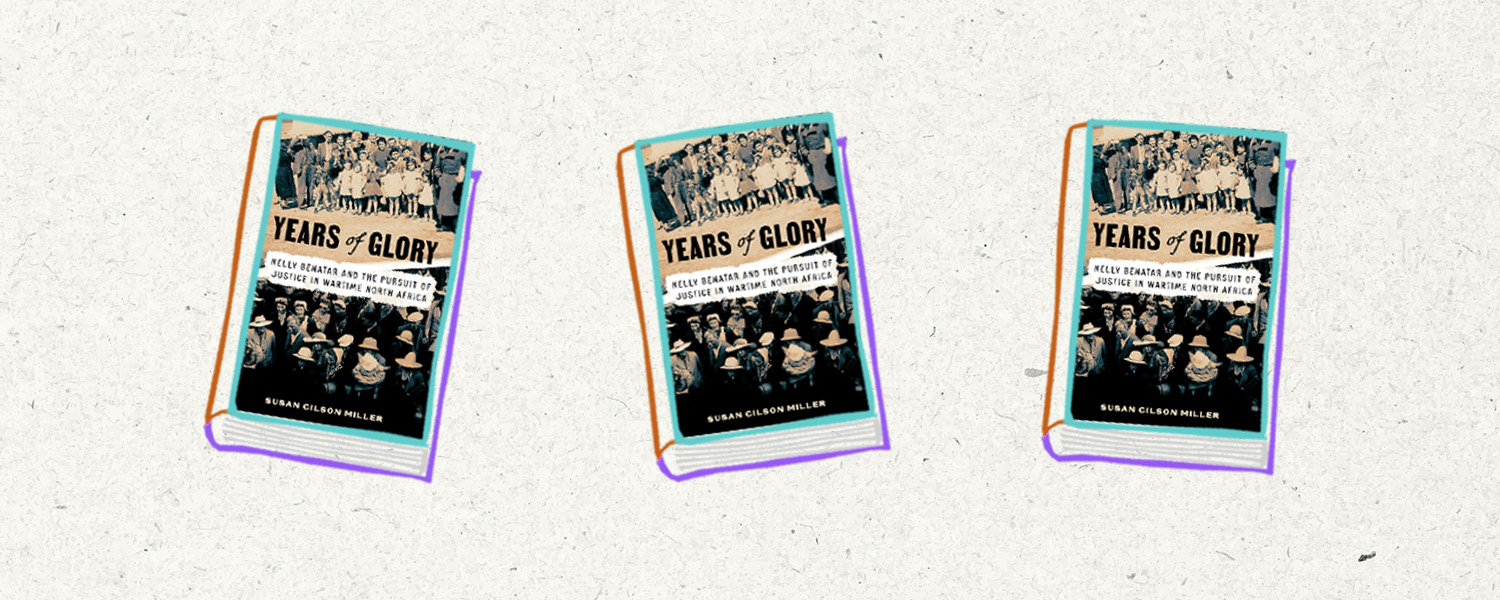
Hélène Cazes Benatar, known as Nelly Benatar, was a Moroccan Jewish lawyer whose story has not been told — until now. Benatar, born Rachel Hélène Cazes to a Sephardi family in Tangier in 1898, grew up speaking Spanish, French, English and haketiya, a Judeo-Arabic dialect. After her family moved to Casablanca, she married Moyses Benatar in 1920 and studied law, passing the French bar in 1933 and becoming modern Morocco’s first licensed women lawyer. When Moyses died in January 1939, Nelly became a young widow and soon threw herself into the war effort — training with the Red Cross to become a nurse. And here is where our story begins.
Susan Gilson Miller’s “Years of Glory” tells the tale of Nelly from 1939 to 1945, each chapter focusing on one year. As Miller writes, “her life offers a vantage point on the full spectrum of events relating to the war in North Africa, including the fall of France in 1940, the turmoil of the Vichy years, the post-1942 period of liberation, and the fate of Morocco’s Jews after the war.” Benatar was a key figure in Morocco in helping the flood of refuges escaping Nazi terror, singlehandedly organizing refugee relief and advocating on behalf of refugees to help them reach safety in the West. After the war ended, she worked with the American Jewish Joint Distribution Committee (JDC) to help resettle now-stateless Jewish refugees, known as “the last million.” As Jewish Studies scholar Susannah Heschel writes in her blurb, “A brilliant work of history, ‘Years of Glory’ reads like a thriller. Susan Gilson Miller describes the hardships but also the glory of Jewish life in Morocco through the intrepid Nelly Benatar, one of the great heroes of modern Jewish history, whose extraordinary leadership Miller uncovers in this fascinating book.” We’re so here for writing women back into history.
Read if you’re into: Jewish history!! The Jewish angle: Nelly Benatar, obviously. Get it here.
4. Every Day the River Changes by Jordan Salama

When he was a senior in college, Jordan Salama journeyed down Colombia’s Magdalena River, a nearly thousand-mile river down the heart of the Latin American country. Salama, the son of a Syrian Argentinian Jewish father and an Iraqi Jewish mother, writes about never feeling truly at home in the United States. “So strange as it is, I’ve found that the more I travel to communities themselves out of the way and misunderstood, the more I’m forced to explain myself, over and over again, to different kinds of people I meet — and the better sense I’m able to make of my own identity once I’m back home.”
Salama’s journey takes him from the Magdalena’s source in the Andes to its mouth on the Caribbean coast, where he travels by boat, bus and more to traverse the 2,500 miles. He never truly traveled alone — he made sure he was always meeting up with someone for each leg of the trip — and while the travelogue was originally for his senior undergraduate thesis, it turned into an impressive debut.
Read if you’re into: travelogues, Latin America. The Jewish angle: Jordan Salama is Jewish. Get it here.
5. All About Me! My Remarkable Life in Show Business by Mel Brooks
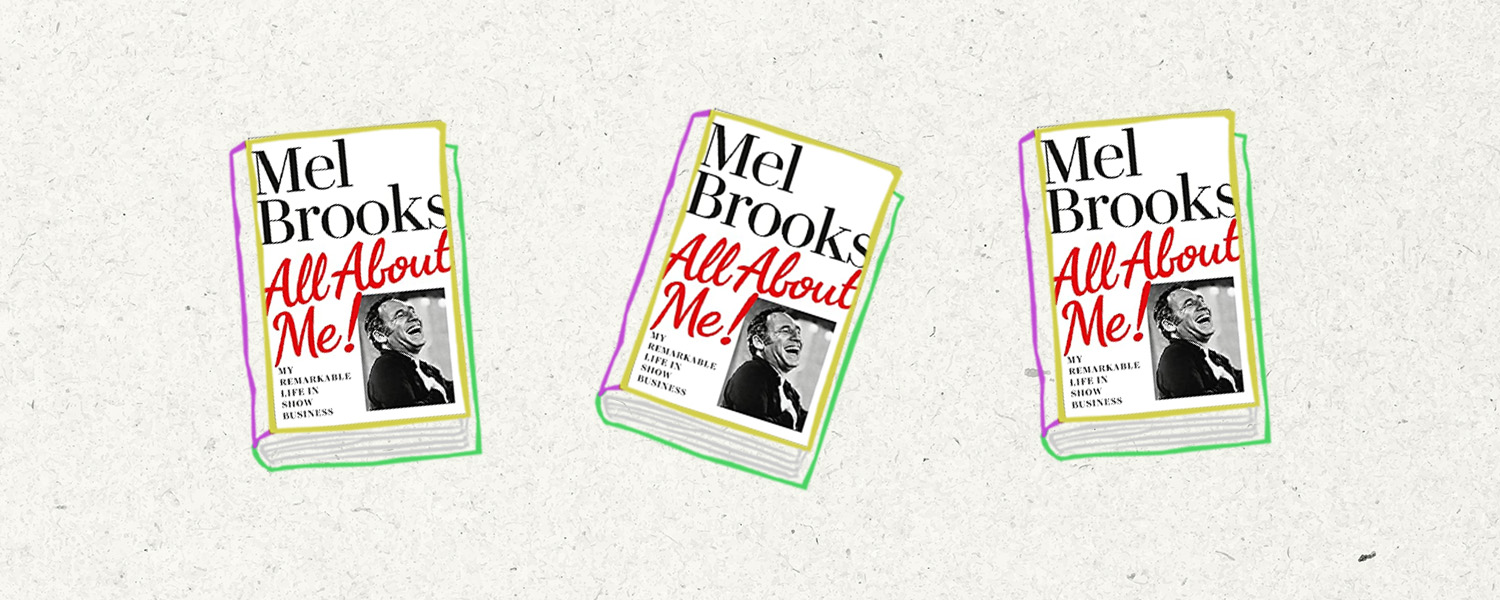
Alert: Mel Brooks wrote a memoir!! Iconic Jewish comedian Mel Brooks, age 95, wrote a memoir!!! “It was joyous and at times bittersweet writing this book and reliving the peaks and valleys of my incredible journey from Brooklyn to Hollywood to Broadway. I hope fans of comedy will get a kick out of the stories behind my work, and really enjoy taking this remarkable ride with me,” Brooks said in a statement. According to Deadline, “His memoir will cover everything from his childhood growing up in Brooklyn, to his service in World War II, to his early years in show business alongside such greats as Sid Caesar, Neil Simon and Carl Reiner, and his long marriage to the late ‘The Graduate’ star Anne Bancroft. Brooks has infused the book with his signature sense of humor, irreverence and sense of nostalgia.”
If you’re more of an audiobook person, Brooks recorded the audiobook himself. It’s coming out on the second night of Hanukkah (November 30, yes, Hanukkah is early this year, yes, I will keep reminding you of that), so if you preorder, it’s literally the perfect present for anyone in your life — or yourself.
Read if you’re into: Mel freakin’ Brooks. The Jewish angle: MEL FREAKIN’ BROOKS. Get it here.
6. By the Grace of the Game: The Holocaust, a Basketball Legacy, and an Unprecedented American Dream by Dan Grunfeld
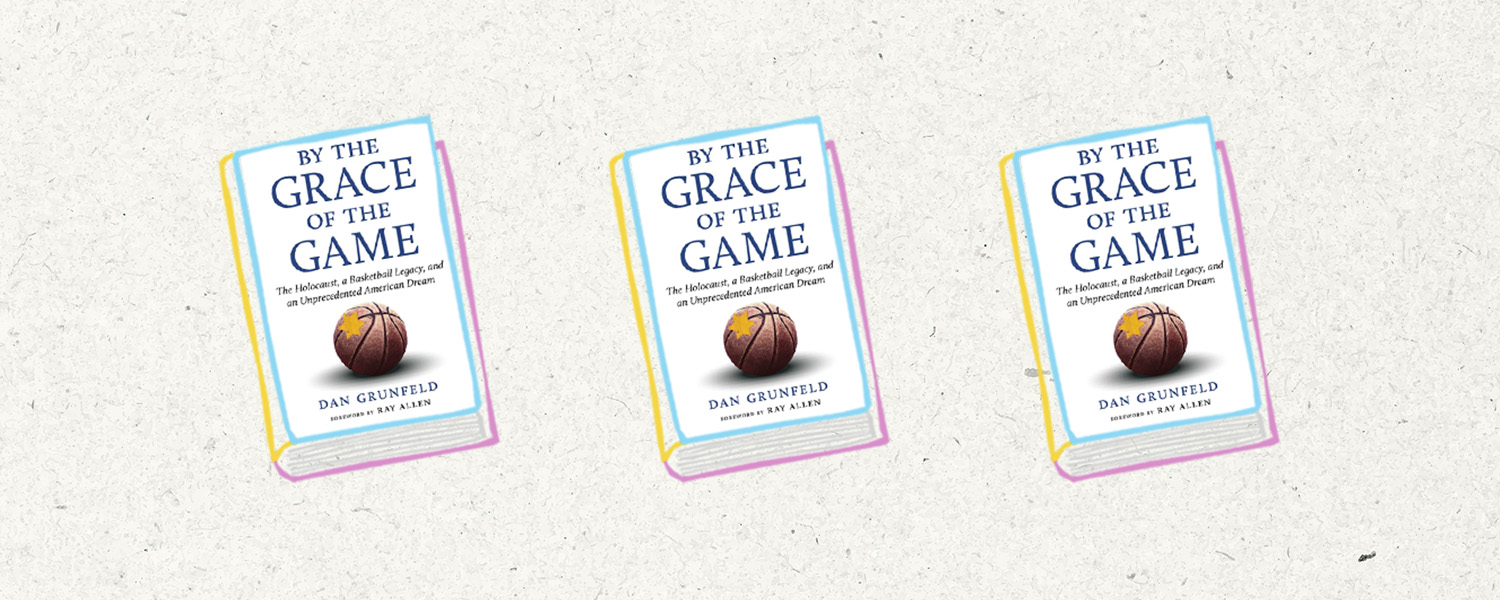
Ernie Grunfeld is likely the only athlete in all four of the major men’s professional leagues — NBA, NHL, MLB, NFL — to be the son of Holocaust survivors. Grunfeld, now 66, was born in Soviet-occupied Romania and immigrated to the United States when he was 8 years old. Growing up in Forest Hills, Queens, he soon became a basketball star and was recruited to play at the University of Tennessee. Alongside future Hall of Famer Bernard King, they became the “Bernie and Ernie Show” (see: “Bernie and Ernie,” a great 30 for 30). Grunfeld would go on to play in the NBA for the Milwaukee Bucks, Kansas City Kings (now the Scaramento Kings) and the New York Knicks before his retirement in 1986. After hanging up his jersey, he stayed in the basketball world, famously serving as the General Manager of the Knicks from 1989 to 1999.
“By the Grace of the Game” is the story of Ernie, through the lens of his son, Dan. Dan, like his father, played basketball, playing in college for Stanford, in the Israeli premier league and in Spain and Germany. Dan tells the story of his father, and his Holocaust survivor grandmother, as he interweaves his own childhood and struggles with basketball. Plus, the intro was written by Ray Allen, NBA Hall of Famer and longtime supporter of the Holocaust Memorial Museum. If you are a Jewish sports fan: Don’t miss this.
Read if you’re into: Jews in sports! The Jewish angle: The Grunfelds. Get it here.
7. Tunnels by Rutu Modan (translated by Ishai Mishory)
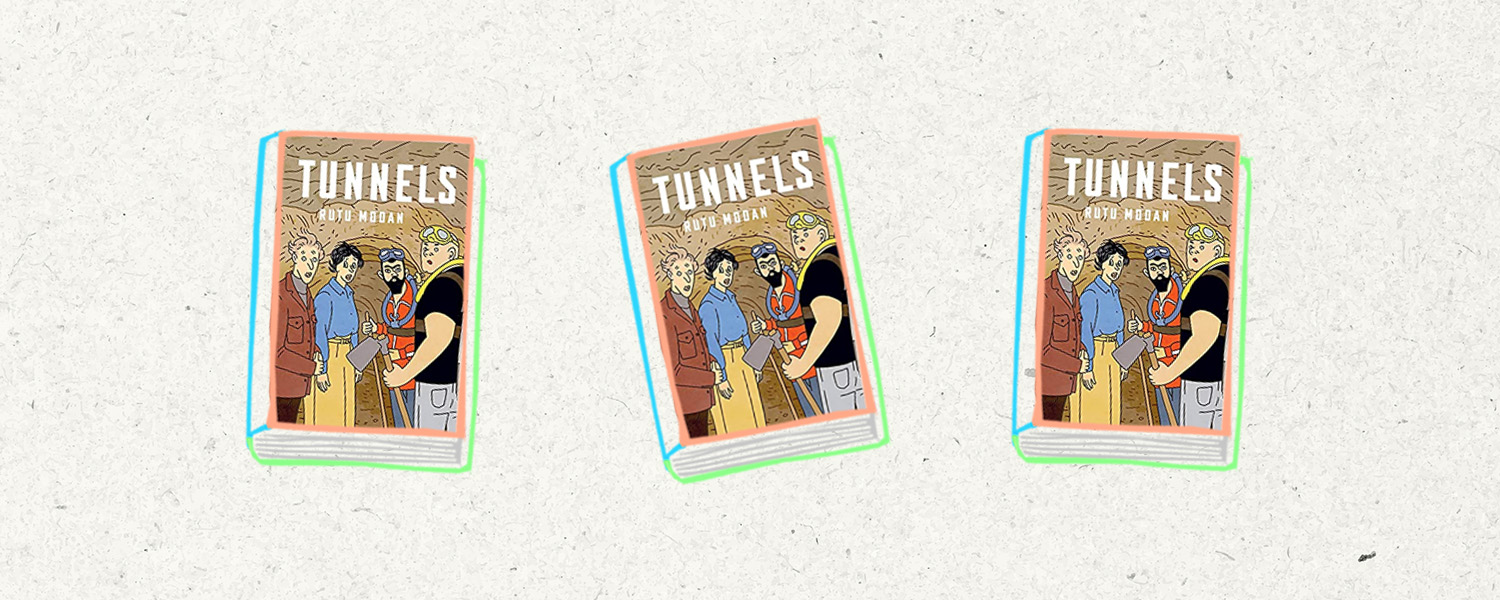
Israeli cartoonist Rutu Modan’s satirical look at the Israeli-Palestinian conflict strikes the right balance of serious and silly. The plot hinges on Nili, a daughter of a once-famous archeologist, Israel Broshi, who now has Alzheimer’s, trying to finish what he began: find the Ark of the Covenant. There’s subplots including an antiquities dealer who buys from ISIS, Broshi’s arch-nemesis archaeologist, Rafi, and her brother. Though satire, Modan brings real emotional heft to the plot — the love between Nili and her son, the tenderness she has for her father, and her ultimately futile mission to find the Ark of the Covenant. Haaretz calls it “a delightful cross between an Indiana Jones movie and Moshe Dayan.”
As Publisher’s Weekly writes, “Drawing in a throwback ‘Tintin’ style that emphasizes elaborate backgrounds with exaggerated foreground characters, Modan embraces political absurdity, subverting ridiculous aspects of faith and fanaticism while never devolving to mockery. The conclusion’s surprise Spielbergian reveal contains equal parts comedy and horror. It’s the very best kind of satire.”
Read if you’re into: graphic novels, reading about the Israeli-Palestinian conflict. The Jewish angle: Illustrator Rutu Modan is Jewish, and the story is set in Israel. Get it here.
8. From the Jewish Provinces: Selected Stories by Fradl Shtok (translated by Jordan D. Finkin & Allison Schacter)
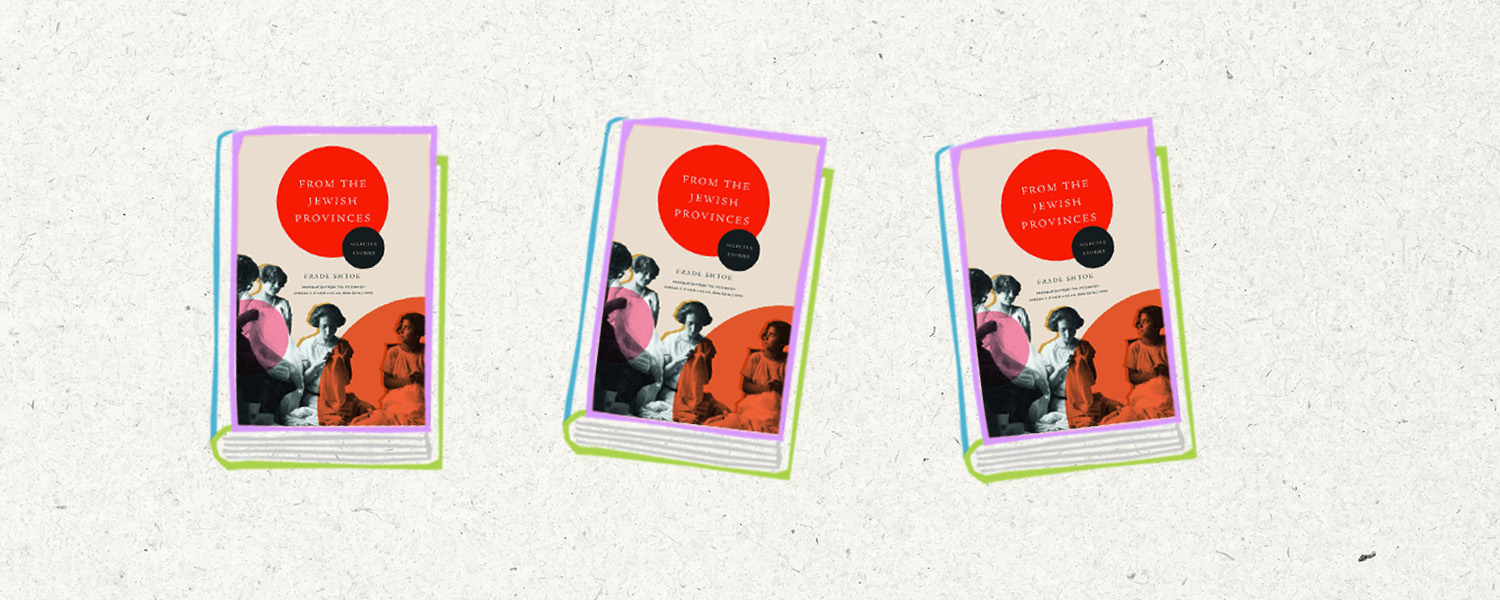
This list has been all about uncovering stories lost to history, so we’re ending on this translation of Yiddish poet and writer by translators Allison Schacter and Jordan D. Finkin. Fradl Shtok was born in a shtetl in 1888, and she likely died in 1990 in a psychiatric state hospital in Orangeburg, New York. She immigrated to the United States in 1907, when she was 17, and started writing poetry and prose. Of her 40 short stories published in Yiddish, the translators have selected 23 — the majority of which are set in Europe, focusing on young, Jewish women in a Hasidic milieu. My favorites include “Hinde Gitel’s Duaghter-in-Law,” the tale of Lantsi, the titular daughter in law of Hinde Gitel, who was so beautiful she refused to cut her hair. In “Another Bride,” Sholem, who keeps getting set up by the matchmaker Henekh, refuses to pick a bride. Why? “Quite simply— he liked traveling around looking at potential brides. It had become something he couldn’t live without. There had been so very many young women he didn’t want, but only because it would all end and Sholem didn’t want it to end.”
Each story leaves you wanting more — like any superb short story writer, Shtok conjures her characters vividly, making you feel as if they exist outside the bounds of the story while giving you a sliver into their lives. A long overdue introduction in English.
Read if you’re into: Yiddish literature. The Jewish angle: Did you read my blurb? Fradl! Yiddish! Jewish stories! Get it here.
Other Jewish books of note:
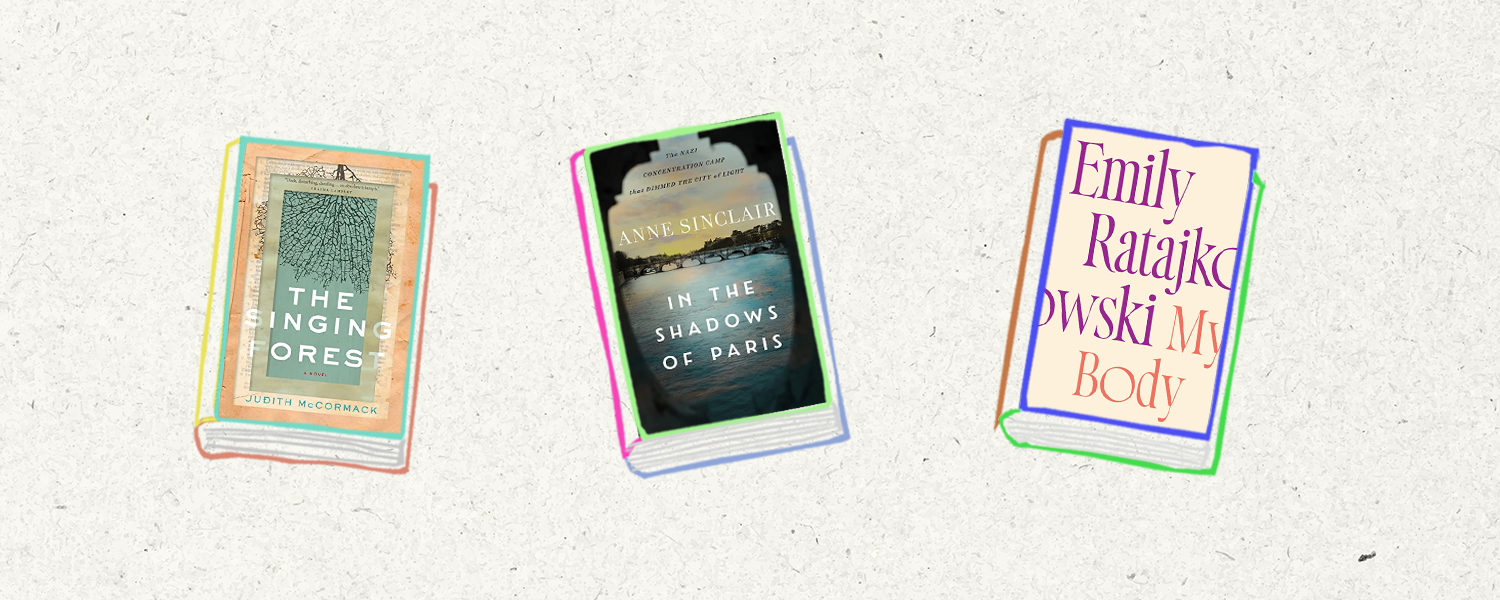
- Elie Wiesel’s Filled with Fire and Light: Portraits and Legends from the Bible, Talmud, and Hasidic World is a collection of essays adapted from his lectures on Judaica. (Nov 2)
- “Alive and Destroyed: A Meditation on the Holocaust on Time” by artist and essayist Jason Francisco is a series of photographs documenting his journeys, “extending from Berlin in the west to Kharkov in the east, Riga in the north to Bucharest in the south ― for the sake of images that might carry the complications of remembering and forgetting in the places where the events we collectively call the Holocaust occurred.” (Nov 30)
- Anne Sinclair’s In the Shadows of Paris: The Nazi Concentration Camp that Dimmed the City of Light (translated by Sandra Smith) is part memoir, part history of the Compiègne-Royallieu concentration camp — where influential Jews, including Anne’s grandfather, were imprisoned. (Nov 16)
- András Koerner’s Early Jewish Cookbooks: Essays on the History of Hungarian Jewish Gastronomy explores Hungarian Jewish culinary culture. (Nov 30)
- “Twelve Tribes: Promise and Peril in the New Israel” by Ethan Michaeli is “a vivid depiction of a modern state contending with ancient tensions and dangerous global forces at this crucial historic moment.” From tech workers in Tel Aviv to ultra-Orthodox Haredim to Ethiopian jews to Israeli Arabs, Michaeli sets out to paint a portrait of modern Israel. (Nov 16)
- “The Family” by Jewish author Naomi Krupitsky is the tale of two best friends and daughters of the Italian mafia, and also a coming-of-age story of 20th-century Brooklyn itself. (Nov 2)
- Jewish model Emily Ratajkowksi’s “My Body” is a vulnerable look at sexual assault, trauma and the commodification of women’s bodies. (Nov 9)
- “Under Jerusalem: The Buried History of the World’s Most Contested City“ by Andrew Lawler is what its title sounds like: a saga of the tombs, tunnels and trenches of the Holy City. (Nov 2)
- Karen Baum Gordon’s “The Last Letter: A Father’s Struggle, a Daughter’s Quest, and the Long Shadow of the Holocaust” is the story of her father, Rudy Baum, who survived the Holocaust and then attempted suicide many years later. Karen uses letters between Rudy and his mother to understand her family’s history, and begins to better understand her own Jewish identity. (Nov 29)
- “Hail Mary: The Rise and Fall of the National Women’s Football League” by Jewish author Britni de la Cretaz & Lyndsey D’Arcangelo dives into the history of the NWFL. (Nov 2)
- “The Postmistress of Paris” by Meg Waite Clayton is the tale of a young American heiress who helps artists hunted by the Nazis escape from war-torn Europe, inspired by real life Chicago heiress Mary Jayne Gold, who worked with American journalist Varian Fry. (Nov 30)
- Jewish author Rax King’s debut, “Tacky: Love Letters to the Worst Culture We Have to Offer,” explores low culture and bad taste and dives into all the ways “tacky” pop culture shaped her coming-of-age. In 14 essays, she covers everything from “Jersey Shore” to Hot Topic to Cheesecake Factory to the Sims, while also writing with clarity about her own girlhood and abusive marriage. (Nov 2)
- In “The Singing Forest” by Judith McCormack, “a lawyer wrestles with power, accountability, and her Jewish identity in attempting to bring a suspected war criminal to justice.” (Nov 9)
